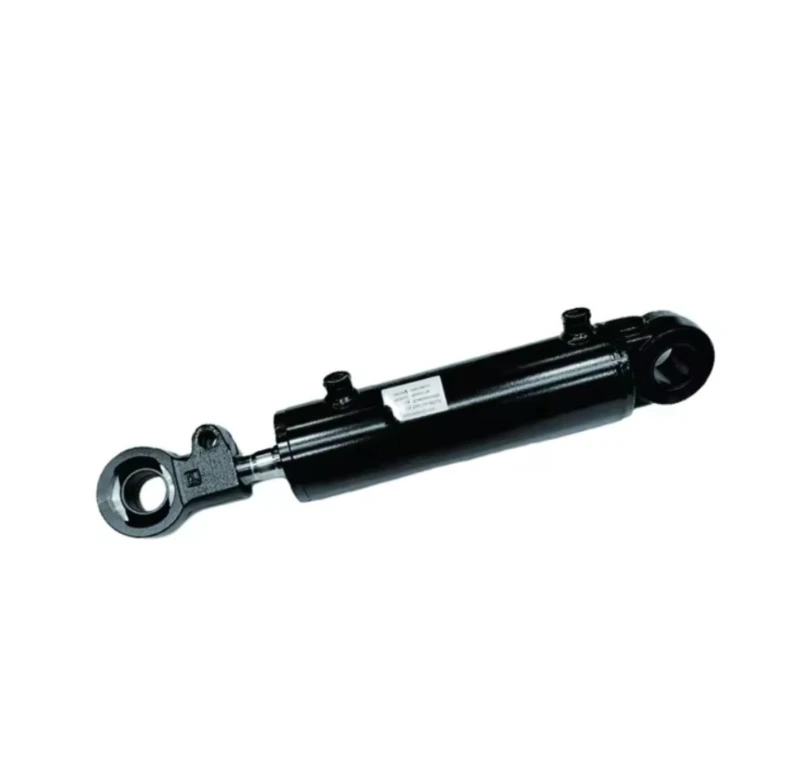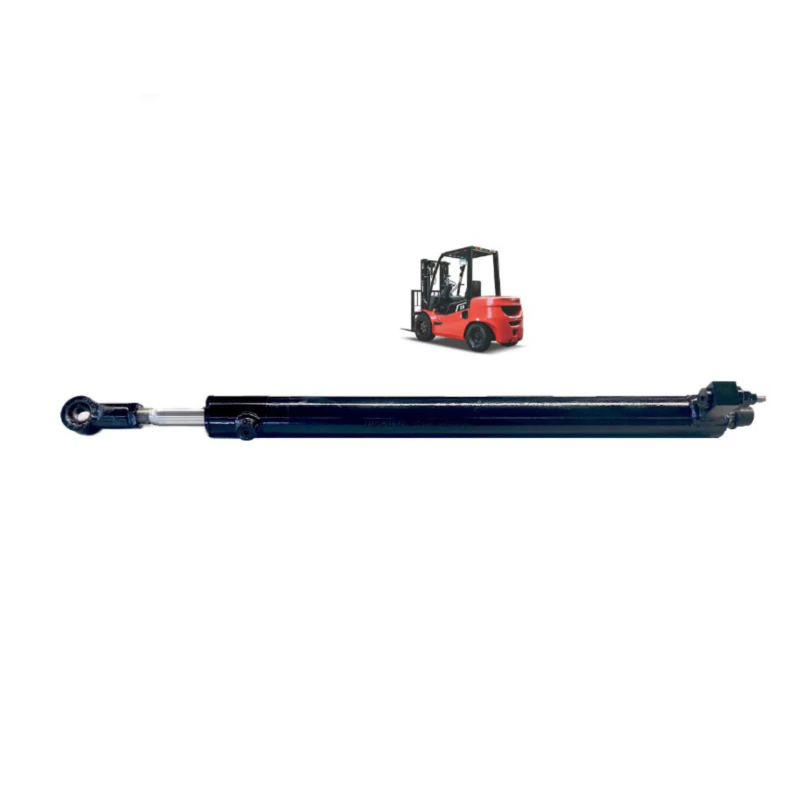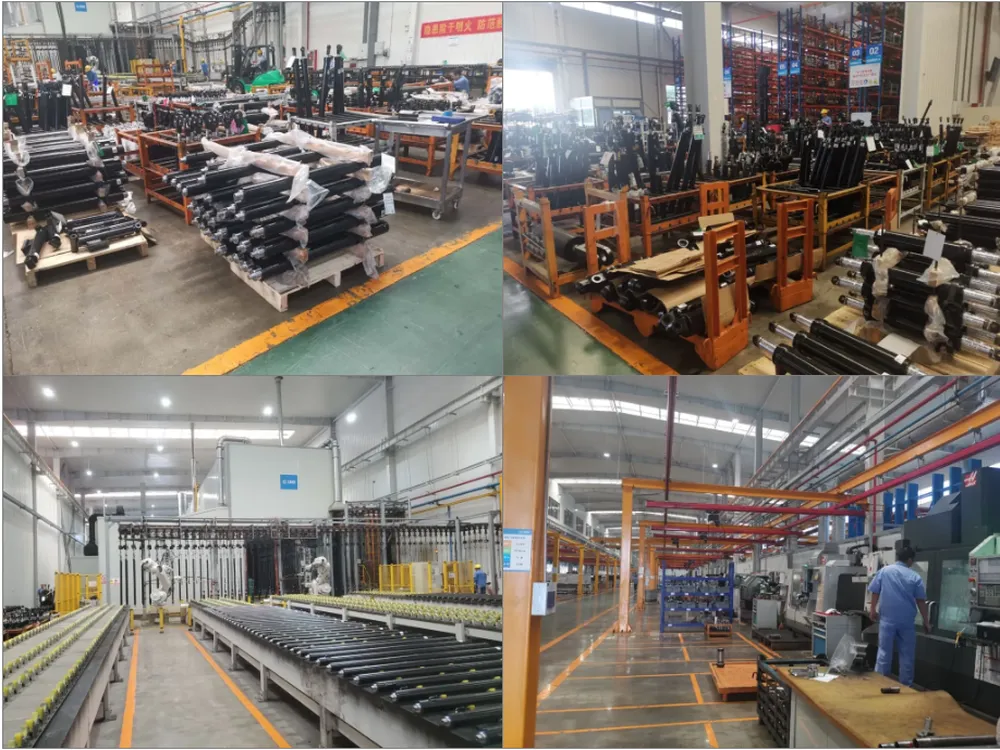Tilt Cylinder Performance Enhancement Techniques
Introduction
The tilt cylinder is a fundamental hydraulic component in construction equipment, such as excavators, bulldozers, and loaders. It is responsible for the tilting motion of the machine's blade or bucket, which is crucial for efficient and precise work. This article will explore several performance enhancement techniques for tilt cylinders, which can improve the machine's productivity, fuel efficiency, and durability.
Performance Enhancement Techniques
Seal Design
The seal design of a tilt cylinder plays a significant role in its performance. A well-designed seal can prevent fluid leakage, reduce friction, and increase the cylinder's lifespan. A lip seal is a popular choice for tilt cylinders, which can provide a tight fit and low friction. However, a wiper seal can also be added to enhance the protection of the cylinder shaft from dirt and debris.

Rod Coating
The coating of the cylinder rod is another crucial factor in its performance. A high-quality coating can reduce friction, prevent corrosion, and extend its life. Chrome and nickel are the two common materials used for rod coating, which can provide excellent wear resistance and smooth surface finish.
Piston Design
The piston design of a tilt cylinder can affect its speed, force, and durability. A larger piston diameter can increase the force output, while a smaller diameter can increase the speed. A composite piston with a combination of metal and plastic can offer better wear resistance and reduce the risk of seal damage.
Fluid Selection
The fluid selection of a tilt cylinder can have a significant impact on its performance. A high-quality hydraulic fluid with the proper viscosity can improve the machine's efficiency, reduce heat generation, and enhance the cylinder's durability. A fluid with anti-wear additives can also provide better protection against wear and tear.

Pressure Control
The pressure control of a tilt cylinder can optimize its performance and reduce energy consumption. A pressure relief valve can regulate the cylinder's pressure and prevent overloading, which can cause damage and reduce its lifespan. A pressure reducing valve can also lower the pressure during the cylinder's return stroke, which can reduce energy consumption.
Working Principle of Tilt Cylinder
A tilt cylinder's working principle is based on Pascal's law of fluid mechanics, which states that "pressure exerted anywhere in a confined incompressible fluid is transmitted equally in all directions throughout the fluid." When hydraulic fluid is pumped into one side of the cylinder's piston, it pushes the piston and the rod to the opposite side, which causes the blade or bucket to tilt. When the fluid is pumped into the other side of the piston, the opposite motion occurs.
How to Choose the Suitable Tilt Cylinder
Choosing the right tilt cylinder for a specific application can be challenging. The following are some factors to consider when selecting a suitable tilt cylinder.
Machine Size and Weight
The machine's size and weight are crucial factors in selecting a tilt cylinder. The cylinder's force output must match the machine's weight and size to ensure efficient and safe operation.
Required Tilt Angle
The required tilt angle is another critical factor in selecting a suitable tilt cylinder. The cylinder's stroke length must match the desired tilt angle, which can vary depending on the job requirements.
Operating Environment
The operating environment can affect the tilt cylinder's performance and lifespan. Harsh environments, such as mines and quarries, may require a cylinder with special coatings or seals to prevent damage from abrasive particles or corrosive substances.
Fluid Type and Viscosity
The hydraulic fluid type and viscosity can also affect the tilt cylinder's performance and lifespan. The fluid must match the manufacturer's specifications and provide adequate lubrication and protection against wear and tear.
Mounting and Connection Type
The mounting and connection type of the tilt cylinder must match the machine's specifications and design. The cylinder's size, shape, and mounting holes must match the machine's frame and attachments to ensure a proper fit.

Tilt Cylinder Installation
A tilt cylinder installation requires proper planning and execution to ensure safe and efficient operation. The following are some key steps in installing a tilt cylinder.
Prepare the Work Area
The work area must be clean, level, and free of obstacles. A stable and secure work surface must be provided to prevent accidents or injuries.
Remove the Old Cylinder
The old cylinder must be removed by detaching the hydraulic hoses and carefully lowering the cylinder to the ground. The cylinder must be handled with care and inspected for damage or wear.
Install the New Cylinder
The new cylinder must be carefully positioned and secured in place using the manufacturer's instructions and recommended torque values. The hydraulic hoses must be connected, and the system must be tested for leaks and proper operation.
Conclusion
In conclusion, tilt cylinders are essential components in construction equipment, and their performance can significantly affect the machine's productivity and efficiency. By applying the performance enhancement techniques discussed above, such as seal design, rod coating, piston design, fluid selection, and pressure control, the tilt cylinder's performance can be optimized to meet specific job requirements. Our company has over 15 years of experience in designing, manufacturing, and selling hydraulic cylinders, including tilt cylinders, boom cylinders, forklift tilt cylinders, steering cylinders, small hydraulic cylinders, and hydraulic pistons. We have a global reputation for providing high-quality products, competitive prices, and excellent customer service. We are committed to helping our customers achieve their goals and improve their business performance.

Edited by Czh.